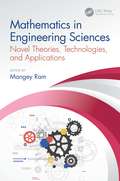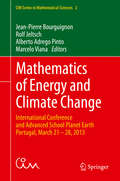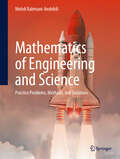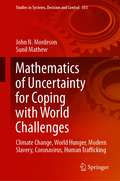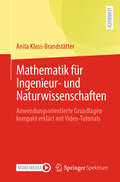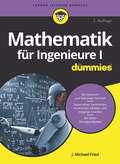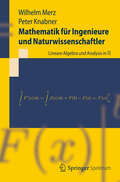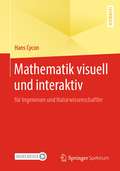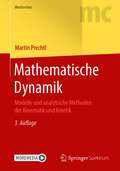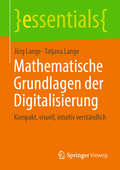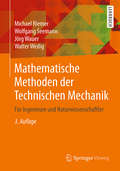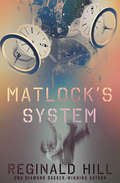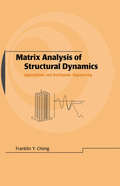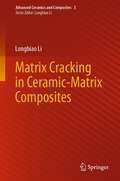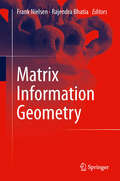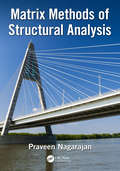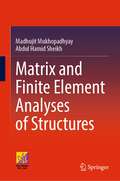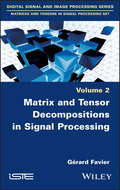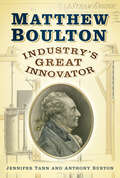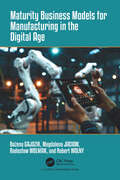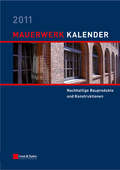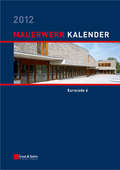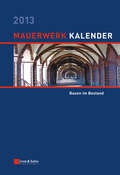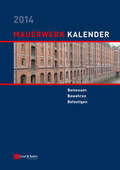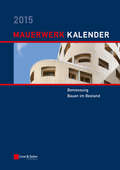- Table View
- List View
Mathematics in Engineering Sciences: Novel Theories, Technologies, and Applications (Mathematical Engineering, Manufacturing, and Management Sciences)
by Mangey RamThis book includes research studies, novel theory, as well as new methodology and applications in mathematics and management sciences. The book will provide a comprehensive range of mathematics applied to engineering areas for different tasks. It will offer an international perspective and a bridge between classical theory and new methodology in many areas, along with real-life applications. Features Offers solutions to multi-objective transportation problem under cost reliability using utility function Presents optimization techniques to support eco-efficiency assessment in manufacturing processes Covers distance-based function approach for optimal design of engineering processes with multiple quality characteristics Provides discrete time sliding mode control for non-linear networked control systems Discusses Bejan number and second law of thermodynamics as instruments for optimizing fluid dynamic systems and aerodynamic systems
Mathematics of Energy and Climate Change
by Marcelo Viana Jean-Pierre Bourguignon Alberto Adrego Pinto Rolf JeltschThe focus of this volume is research carried out as part of the program Mathematics of Planet Earth, which provides a platform to showcase the essential role of mathematics in addressing planetary problems and creating a context for mathematicians and applied scientists to foster mathematical and interdisciplinary developments that will be necessary to tackle a myriad of issues and meet future global challenges. Earth is a planet with dynamic processes in its mantle, oceans and atmosphere creating climate, causing natural disasters and influencing fundamental aspects of life and life-supporting systems. In addition to these natural processes, human activity has increased to the point where it influences the global climate, impacts the ability of the planet to feed itself and threatens the stability of these systems. Issues such as climate change, sustainability, man-made disasters, control of diseases and epidemics, management of resources, risk analysis and global integration have come to the fore. Written by specialists in several fields of mathematics and applied sciences, this book presents the proceedings of the International Conference and Advanced School Planet Earth, Mathematics of Energy and Climate Change held in Lisbon, Portugal, in March 2013, which was organized by the International Center of Mathematics (CIM) as a partner institution of the international program Mathematics of Planet Earth 2013. The book presents the state of the art in advanced research and ultimate techniques in modeling natural, economical and social phenomena. It constitutes a tool and a framework for researchers and graduate students, both in mathematics and applied sciences.
Mathematics of Engineering and Science: Practice Problems, Methods, and Solutions
by Mehdi Rahmani-AndebiliThis study guide is designed for students taking courses in engineering mathematics and mathematical methods in science. The textbook includes problems with detailed solutions to teach students the subjects in detail and partially and fully solved exercises with hints to required formulas and answers, enabling students to practice independently and guiding them through problem-solving procedures. The material covered in the book includes complex functions, complex transformations, singularities of complex functions, complex series, Taylor and Laurent series expansions, residue, complex integration, Fourier series, half-domain Fourier sine and cosine series, complex Fourier series, Fourier integral, complex Fourier integral, Fourier transform, half-domain Fourier sine and cosine transform, and partial differential equations. Offering detailed solutions, multiple problem-solving methods, and clear explanations of concepts, this hands-on tutorial will improve students’ problem-solving skills and foster a solid understanding of engineering mathematics and mathematical methods in science.
Mathematics of Uncertainty for Coping with World Challenges: Climate Change, World Hunger, Modern Slavery, Coronavirus, Human Trafficking (Studies in Systems, Decision and Control #353)
by John N. Mordeson Sunil MathewThis book ranks countries with respect to their achievement of the Sustainable Development Goals and their vulnerability to climate change. Human livelihoods, stable economies, health, and high quality of life all depend on a stable climate and earth system, and a diversity of species and ecosystems. Climate change significantly impacts human trafficking, modern slavery, and global hunger. This book examines these global problems using techniques from mathematics of uncertainty. Since accurate data concerning human trafficking and modern slavery is impossible to obtain, mathematics of uncertainty is an ideal discipline to study these problems. The book also considers the interconnection between climate change, world hunger, human trafficking, modern slavery, and the coronavirus. Connectivity properties of fuzzy graphs are used to examine trafficking flow between regions in the world. The book is an excellent reference source for advanced undergraduate and graduate students in mathematics and the social sciences as well as for researchers and teachers.
Mathematik für Ingenieur- und Naturwissenschaften: Anwendungsorientierte Grundlagen kompakt erklärt mit Video-Tutorials
by Anita Kloss-BrandstätterDieses innovative Video-Lehrbuch ist ein kompakter Begleiter für alle, die mathematische Grundlagen schnell erfassen und sicher anwenden möchten – insbesondere für Studierende der Natur- und Ingenieurwissenschaften. Das Buch verbindet kompakte Wissensvermittlung mit praxisnahen Anwendungen und einem direkten Zugang zu ausführlichen Video-Tutorials im YouTube-Kanal der Autorin („Sciencebarbie erklärt Mathematik&“). Mit klarer Struktur und prägnanter Darstellung bietet es den perfekten Einstieg in die Welt der höheren Mathematik, ohne dabei den Fokus auf das Wesentliche zu verlieren: die Anwendung. Praktische Beispiele und reale Problemstellungen stehen im Mittelpunkt, während der theoretische Hintergrund auf das Notwendige reduziert ist. Durch anschauliche Schritt-für-Schritt-Erklärungen in den Videos werden selbst komplexe Themen leicht verständlich. Ob im Studium, zur Prüfungsvorbereitung oder für die Anwendung im Berufsalltag – dieses Buch bietet eine flexible und effiziente Möglichkeit, die anwendungsorientierten Grundlagen der Mathematik wirklich zu durchdringen.
Mathematik für Ingenieure I für Dummies (Für Dummies)
by J. Michael FriedAlle Ingenieure benötigen sie - kaum einer mag sie eigentlich: die Mathematik. Aber Ingenieursmathematik muss nicht schwer verständlich sein, sie kann auch Spaß machen. J. Michael Fried vermittelt Ihnen in diesem Buch die Grundlagen der Mathematik, die alle Ingenieure in den ersten Semestern benötigen. Los geht's mit der Linearen Algebra: Lernen Sie, wie Sie mit Vektoren und Matrizen rechnen, lineare Gleichungssysteme lösen und Eigenwerte sowie Eigenvektoren berechnen. Außerdem führt der Autor Sie in die Geheimnisse der eindimensionalen Analysis ein und erklärt alles Wissenswerte zu Folgen und Grenzwerten, zur Differenzial- und zur Integralrechnung. Anhand von vielen Tipps und Praxisbeispielen lernen Sie, wo die erworbenen Kenntnisse in den Ingenieurwissenschaften angewendet werden. Mit Übungsaufgaben und ausführlichen Lösungen können Sie Ihr Wissen auch gleich noch überprüfen und festigen. Dieses Buch richtet sich an Studierende aller Ingenieurwissenschaften - sowohl zum Lernen als auch zum Nachschlagen.
Mathematik für Ingenieure und Naturwissenschaftler
by Wilhelm Merz Peter KnabnerBasierend auf jahrzehntelanger Lehrerfahrung an der Universität Erlangen, bietet das Buch alle Mathematik-Themen, die für Ingenieure in den ersten beiden Semestern an deutschen Universitäten relevant sind: Lineare Algebra und Analysis in einer Raumdimension. Alle Aspekte sind detailliert und anhand kreativer und teils ausgefallener Beispiele dargestellt. Da die meisten Aussagen mit einer Beweisidee versehen sind, ist der Band auch für Lehramtsstudierende (Bachelor) geeignet. Begleitendes Übungsmaterial ist als Video im Internet verfügbar.
Mathematik visuell und interaktiv: für Ingenieure und Naturwissenschaftler
by Hans CyconDieses Buch hilft, mathematische Zusammenhänge zu erkennen und „mentale Bilder“ zur oft sehr abstrakten Sprache der Hochschulmathematik auszuprägen. Durch den visuellen Zugang und viele interaktive Elemente wird die visuelle Wahrnehmung direkt angesprochen – der meist stark formalisierte Umweg über Schrift, Symbolik und Sprache tritt dagegen in den Hintergrund. Es handelt sich hier also nicht um ein klassisches Lehrbuch: Die mathematischen Ausführungen werden nicht streng und rigoros mit allen Verzweigungen dargestellt und sind daher alles andere als vollständig. Auf formale mathematische Beweise wird weitgehend verzichtet. Vielmehr werden hier mathematische Ideen und Prinzipien vorgestellt. Primäre Zielgruppe sind angehende Ingenieure und Naturwissenschaftler, die, über die formale Sprache klassischer Lehrbücher hinaus, Bilder im Bewusstsein formen und die Ideen hinter den Sachverhalten verstehen möchten. Das Buch ist größtenteils auch für interessierte Laien, die sich der Ästhetik mathematischer Bilder und Ideen widmen möchten, gut lesbar und verständlich.
Mathematische Dynamik: Modelle und analytische Methoden der Kinematik und Kinetik (Masterclass)
by Martin PrechtlIn diesem Lehrbuch werden folgende Themengebiete abgedeckt: Kinematik, Massenpunkt- und Starrkörperkinetik, Mehrkörpersysteme und schwingungsfähige Systeme – einschließlich ausgewählter Fragestellungen der sogenannten Maschinendynamik. Dabei liegt der Fokus auf den analytischen Lösungsmethoden. Zudem wird die praktische Relevanz der Dynamik mit einem wissenschaftlich-theoretischen Fundament verknüpft. Alle hierfür nötigen Herleitungen sind im Text integriert und in ausführlicher Form erklärt. Um den Komplex der Dynamik zu erfassen, werden einfache Beispiele mit verschiedenen Ansätzen gerechnet und auf Vor-/Nachteile verglichen. Jene Aufgaben sind derart strukturiert, dass man die Vorgehensweise bei der Lösungsfindung anhand eingängiger Konstellationen leicht nachvollziehen kann – wie beispielsweise bei der Wahl eines zweckmäßigen Koordinatensystems. Folglich ist das Buch Grundlagenlektüre und Nachschlagewerk zugleich, für alle, die sich die Theorie technischer Bewegungsvorgänge erarbeiten wollen. Ein eigenes Übungskapitel mit „gemischten Arbeitspaketen“ rundet das Lehrbuch ab; für alle Aufgaben ist eine Lösungsvariante skizziert und ausführlich kommentiert. Zur Vertiefung der Eigenschaften ausgewählter mechanischer Systeme werden virtuelle Modelle mit dem kostenlosen Tool SimulationX angeboten: Videos geben dabei einen hilfreichen Überblick und Simulationen können von den LeserInnen selbst ausgeführt, modifiziert und weiterentwickelt werden. Diese interaktiven Beispiele bieten damit auch einen spielerischen Zugang zur Welt der Technischen Dynamik, außerdem absolviert man nebenbei einen kleinen Crash-Kurs in SimulationX.
Mathematische Grundlagen der Digitalisierung: Kompakt, visuell, intuitiv verständlich (essentials)
by Tatjana Lange Jörg LangeDie Autoren klassifizieren kurz die in Natur und Technik auftretenden Signale und stellen die Ecksteine der „analogen“ Fourier-Transformation als Basis für das essential dar. Sie zeigen anschaulich den Zusammenhang von Periodifizierung und Abtastung von Signalen im Zeit- und Frequenzbereich und leiten daraus das für die Digitalisierung fundamentale Abtasttheorem ab. Darauf aufbauend wird weitgehend visuell die diskrete Fourier-Transformation erklärt und deren Handhabung an einem Rechenbeispiel gezeigt. Es folgt eine Kurzdarstellung ausgewählter Grundbausteine der Übertragungstechnik und eine robuste Erläuterung des Mehrträger-Verfahrens und des orthogonalen Frequenzmultiplexverfahrens OFDM als Kernstück der Signalübertragung im Internet.Die Autoren:Prof. Dr.-Ing. habil. Jörg Lange war in leitender Position im Entwicklungsbereich Mobilfunk in einem Technologiekonzern tätig, bevor er in Ruhestand ging. Prof. Dr.-Ing. Tatjana Lange lehrte vor ihrem Ruhestand Automatisierungstechnik an der Hochschule Merseburg und ist weiterhin in der Forschung aktiv.
Mathematische Methoden der Technischen Mechanik: Für Ingenieure und Naturwissenschaftler (Springer-Lehrbuch)
by Jörg Wauer Michael Riemer Walter Wedig Wolfgang SeemannDieses Lehrbuch bringt eine kompakte Darstellung der mathematischen Methoden, die für die Festkörpermechanik bedeutsam und wichtig sind, u. a. Matrizenrechnung, Theorie linearer Differenzialgleichungen mit Distributionstheorie sowie Variationsrechnung und analytische Mechanik. Ziel ist eine Verständnisbrücke zwischen mathematischer und ingenieurmäßiger Vorgehensweise zu schlagen. Somit ist es für angewandte Mathematiker wie auch Ingenieure gleichermaßen hilfreich und sowohl im Studium als auch im Beruf von Nutzen. In der aktuellen Auflage wurden in jedem Kapitel Aufgaben mit vollständigen Lösungen sowie Abschnitte zur Numerischen Integration und zu Formelmanipulationsprogrammen ergänzt.
Matlock's System
by Reginald HillA dystopian thriller of &“twisty intrigue&” by the award-winning author of the Dalziel and Pascoe mysteries (Publishers Weekly). Best known for his Dalziel and Pascoe novels, which were adapted into a hit BBC series, Reginald Hill proves himself to be a &“master of . . . cerebral puzzle mysteries&” in his stand-alone thrillers as well—now available as ebooks (The New York Times). A national Expectation of Life seemed liked a good idea at the time. Nearly half a century ago, Britain&’s overpopulation resulted in a collapsing economy that foretold certain doom. The visionary solution was left to then–Prime Minister Matthew Matlock. The Age Bill was his brainchild. It also became mandatory. To control the population, every English citizen was fitted with a clock heart. Expectation of Life: seventy-five. Matlock was the first. The country followed. But now that he&’s reaching his golden years, Matlock wants only to abolish his draconian law. So do others in high places. If Matlock can trust them. And if he still has what it takes to rise against his E.O.L. before time ticks away.
Matrix Analysis of Structural Dynamics: Applications and Earthquake Engineering (Civil and Environmental Engineering #Vol. 4)
by Franklin Y. ChengUses state-of-the-art computer technology to formulate displacement method with matrix algebra. Facilitates analysis of structural dynamics and applications to earthquake engineering and UBC and IBC seismic building codes.
Matrix Cracking in Ceramic-Matrix Composites (Advanced Ceramics and Composites #3)
by Longbiao LiThis book focuses on the matrix cracking behavior in ceramic–matrix composites (CMCs), including first matrix cracking behavior, matrix cracking evolution behavior, matrix crack opening and closure behavior considering temperature and oxidation. The micro-damage mechanisms are analyzed, and the micromechanical damage models are developed to characterize the cracking behavior. Experimental matrix cracking behavior of different CMCs at room and elevated temperatures is predicted. The book can help the material scientists and engineering designers to better understand the cracking behavior in CMCs.
Matrix Information Geometry
by Rajendra Bhatia Frank NielsenThis book presents advances in matrix and tensor data processing in the domain of signal, image and information processing. The theoretical mathematical approaches are discusses in the context of potential applications in sensor and cognitive systems engineering. The topics and application include Information Geometry, Differential Geometry of structured Matrix, Positive Definite Matrix, Covariance Matrix, Sensors (Electromagnetic Fields, Acoustic sensors) and Applications in Cognitive systems, in particular Data Mining.
Matrix Methods of Structural Analysis
by Praveen NagarajanThis book deals with matrix methods of structural analysis for linearly elastic framed structures. It starts with background of matrix analysis of structures followed by procedure to develop force-displacement relation for a given structure using flexibility and stiffness coefficients. The remaining text deals with the analysis of framed structures using flexibility, stiffness and direct stiffness methods. Simple programs using MATLAB for the analysis of structures are included in the appendix. Key Features Explores matrix methods of structural analysis for linearly elastic framed structures Introduces key concepts in the development of stiffness and flexibility matrices Discusses concepts like action and redundant coordinates (in flexibility method) and active and restrained coordinates (in stiffness method) Helps reader understand the background behind the structural analysis programs Contains solved examples and MATLAB codes
Matrix and Finite Element Analyses of Structures
by Madhujit Mukhopadhyay Abdul Hamid SheikhThis textbook has been primarily written for undergraduate and postgraduate engineering students studying the mechanics of solids and structural systems. The content focuses on matrix, finite elements, structural analysis, and computer implementation in a unified and integrated manner. Using classical methods of structural analysis, it discusses matrix and the finite element methods in an easy-to-understand manner. It consists of a large number of diagrams and illustrations for easy understanding of the concepts. All the computer codes are presented in "FORTRAN" AND "C". This textbook is highly useful for the undergraduate and postgraduate engineering students. It also acquaints the practicing engineers about the computer-based techniques used in structural analysis.
Matrix and Tensor Decompositions in Signal Processing
by Gérard FavierThe second volume will deal with a presentation of the main matrix and tensor decompositions and their properties of uniqueness, as well as very useful tensor networks for the analysis of massive data. Parametric estimation algorithms will be presented for the identification of the main tensor decompositions. After a brief historical review of the compressed sampling methods, an overview of the main methods of retrieving matrices and tensors with missing data will be performed under the low rank hypothesis. Illustrative examples will be provided.
Matthew Boulton: Industry's Great Innovator
by Anthony Burton Jennifer TannMatthew Boulton, of the famous Boulton & Watt steam engine partnership, was an eighteenth-century designer and inventor. Before he partnered up with James Watt he was a successful industrialist manufacturing a range of silver and plated goods, buttons and buckles, and the sort of knickknackery known at the time as ‘toys’. He had a business network throughout continental Europe with travelling agents who represented his various interests. Without his commercial skills, Watt would probably have failed to bring his steam engine to market, but in due course Boulton started the process that would revolutionise the world of industry and transport: the engine was exported all over the world. Boulton was an affable man who enjoyed company and creative conversation. He was also a founder member of the Lunar Society and became a fellow of the Royal Society. This exciting new book, the first full-length biography of Matthew Boulton since H.W. Dickinson’s excellent publication in 1937, is the culmination of twenty years’ original research and brings to life one of the most colourful characters of the Industrial Revolution.
Maturity Business Models for Manufacturing in the Digital Age
by Bożena Gajdzik Magdalena Jaciow Radoslaw Wolniak Robert WolnyThe book primarily focuses on the process of industrial transformation in the era of digitalization. It meticulously discusses the processes, technologies, and business models that delineate modern industrial landscapes. A business maturity model is a tool used in organizations to assess how advanced their processes, systems, and procedures are. This model is utilized to identify areas that might require improvements, and then to measure progress in these improvements. The goal is to achieve "maturity", meaning the organization has well-defined, measurable, and repeatable processes. The first chapter traces the evolution of the manufacturing sector, emphasizing the shift toward digitalization and automation, while considering historical context and future trends. The second chapter examines business maturity models, reviewing current approaches and arguing for a broader perspective that includes environmental and social considerations. Chapter three introduces a research model for assessing the maturity of Polish manufacturing companies, detailing the methodology and research instruments used. The fourth chapter presents case studies from Polish industries (automotive, steel, and food), providing practical insights into the application of maturity models in real-world scenarios.
Mauerwerk Kalender 2011: Schwerpunkt - Nachhaltige Bauprodukte und Konstruktionen (Mauerwerk-Kalender (VCH) *)
by Wolfram Jäger Herausgegeben Von DresdenProven and new: practical compendium for masonry for 35 years and counting: basics, examples, code commentaries - current and firsthand. Focus for 2011: Sustainable building products and structures
Mauerwerk Kalender 2012: Schwerpunkt - Eurocode 6 (Mauerwerk-Kalender (VCH) *)
by Wolfram Jäger DresdenProven and new: practical compendium for masonry for 36 years and counting: basics, examples, code commentaries - current and firsthand. Focus for 2012: Eurocode 6 with its German National Annexes
Mauerwerk Kalender 2013: Bauen im Bestand (Mauerwerk-Kalender (VCH) *)
by Wolfram Jäger Herausgegeben Von DresdenDiese Ausgabe des Mauerwerk-Kalenders widmet sich schwerpunktmäßig dem Bauen im Bestand. Von Untersuchung und Bewertung bis hin zu Sanierung und Verstärkung werden alle wesentlichen Aspekte abgehandelt. Außerdem wird ausführlich auf bauphysikalische Belange wie Feuchteschutz und Brandschutz im Rahmen von Sanierungen eingegangen. Als Ergänzung zum Mauerwerk-Kalender 2012, der den Schwerpunkt Eurocode 6 hatte, werden umfangreiche Erläuterungen und Anwendungshilfen zum Teil 1 – 2 des EC 6 inkl. NA (Heißbemessung) gegeben. Des Weiteren werden wie gewohnt auch im 38. Jahrgang sämtliche zulassungsbedürftige Neuentwicklungen und die Baustoffeigenschaften aller Mauerwerksarten, Mauersteine und Mauermörtel mit der Aktualität eines Jahrbuches vorgestellt.
Mauerwerk Kalender 2014: Bemessen, Bewehren, Befestigen (Mauerwerk-Kalender (VCH) *)
by Wolfram JägerIn the year of the official introduction of Eurocode 6, the Masonry Yearbook gives useful practical help in its application. Further main themes: reinforced masonry and fixings. In addition, as ever: all new developments requiring approval and building material characteristics.
Mauerwerk Kalender 2015: Bemessung, Bauen im Bestand (Mauerwerk-Kalender (VCH) *)
by Wolfram JägerProven and new: practical compendium for masonry for 39 years and counting: basics, examples, code commentaries - current and firsthand. Focus for 2015: Eurocode 6, Energy Saving Ordinance, Restoration
